posted by Josh Evans
Bee larvae have been on the roster since the summer, when urban beekeeping initiative Bybi began supplying us with their surplus. Keeping beehives involves removing some of the larvae early in the season, so that there will be an excess of honey later on to harvest. [NB: Actually the larvae removal has nothing to do with honey – it is a strategy devised to manage Varroa mite populations in the hive] Traditionally, these combs were eaten whole – larvae, pupae, honey and all – and in that form they are one of nature’s most nutritionally complete foods.
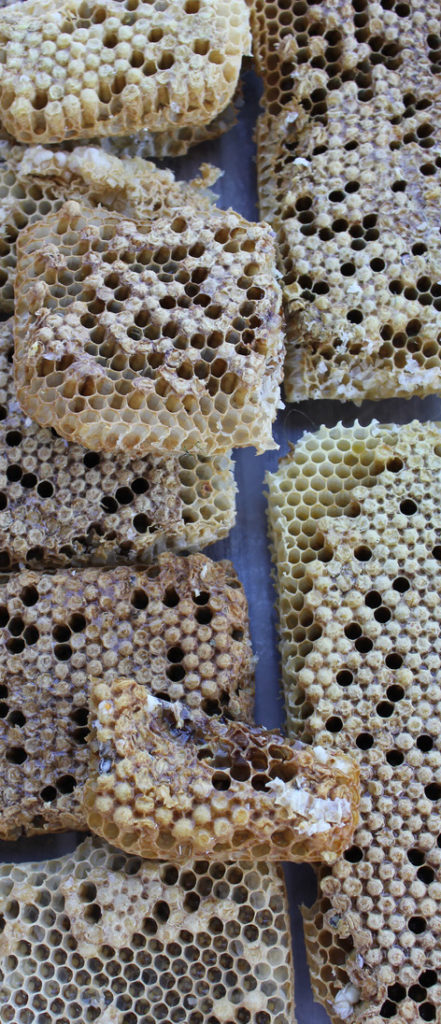
The sorting is a labour-intensive process. First we blast-freeze the whole combs to solidify the larvae and harden the wax. Then we break the combs down by shaking them in a large bucket.
We have many loose larvae and small chunks of wax. Now comes the process of going through by hand to sort the bees from the chaff.
We have tried mesh strainers, wide sieves, and various mixed techniques, but we’ve yet to find a faster way. It may come to liquid nitrogen. [NB: It did.]
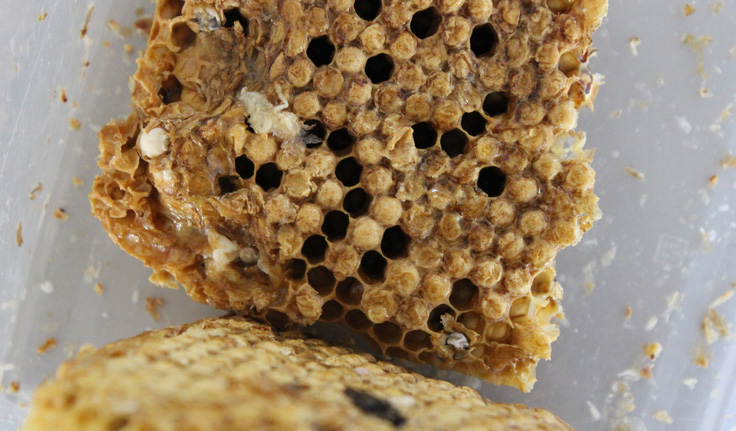
For our purposes we need to separate the bees from the wax, and sort them by stage of development. The larvae are younger, still curled, white and smooth, while the pupae have begun to differentiate their form, gaining a thorax and eyes. Later come legs and wings, though by this point the bees are quite mature and not as delicious.
The flavour is something of egg and honey, and warm honeydew melon. They are fatty on the tongue and deeply savoury with a lingering sweetness. Ben likes to remind new tasters that all this little thing has ever eaten is honey, so how can it not be delicious. Sound reasoning.
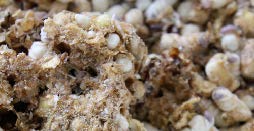
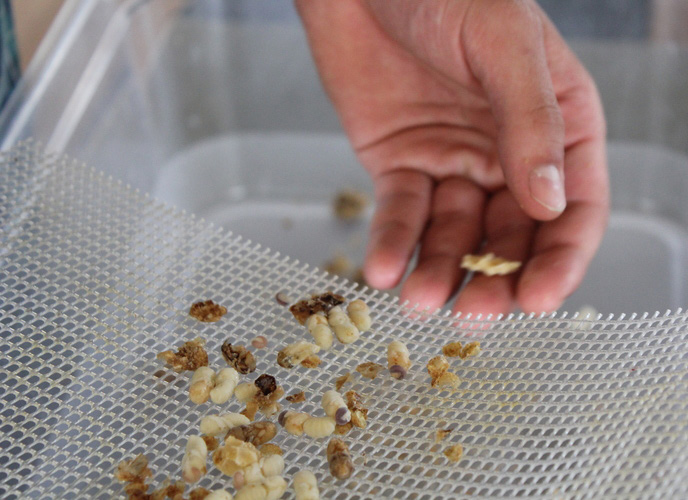
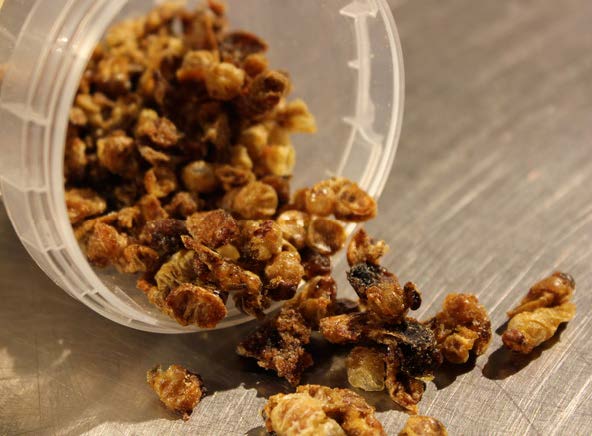
Once sorted, the larvae and pupae keep well in the freezer.
The first thing we thought to do was to make mayonnaise. They are fatty and savoury and fill in for eggs exceptionally well. This is what we served with live ants as one tasting for our presentation at MAD.
Then, like we do with most things, we stuck some in the dehydrator to see how their flavour intensified. They gained a deep sweet and savoury dynamic, and with a bit of fine salt turned into a better bar snack than any we’ve encountered.
Yet leaving the insect whole can only get us so far. For most people, the largest barriers to ingesting an insect are its whole form and texture. If we transform the animal and remove its chitinous exoskeleton, we can begin to introduce these new and interesting flavours and build from there. This has been our strategy with the grasshopper garum.
So then we made granola, replacing the usual oil and sugar with bee larvae and honey.
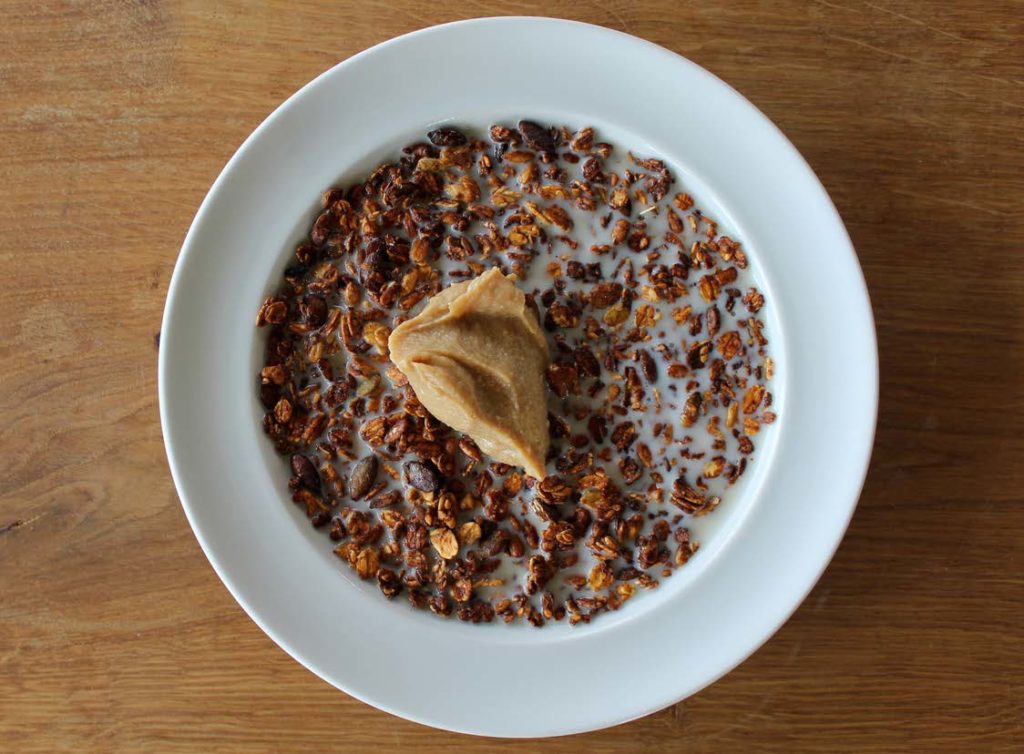
We let the larvae thaw, then blended them into a pale yellow liquid of a viscosity between milk and cream. We blended honey through to sweeten, stirred it through a mixture of oats, walnuts, seeds of pumpkin, sunflower, flax, and fennel, and cracked dried juniper berries, salted it and baked it at 160˚ for 15-20 minutes, stirring a few times for even browning.
The granola browned quickly – more rapid Maillard reactions likely due to the higher ratio of protein to sugar, thanks to the fatty, proteinous larvae.
We also made a ‘yoghurt’ by taking some of our bee larvae milk and honey mixture, inoculating it with some live yoghurt, and incubating it in a pot overnight in the oven at 42˚. The thin liquid set well, thickening to the point of a nut butter, and taking on a gorgeous caramel hue and sweet, complex aroma that accentuates the nuttiness of the larvae.
We are fairly sure the granola is safe, having been cooked for so long. We don’t know as much about how the larvae ferment and their behaviour at lower temperatures like 42˚, so we need to do more research, including toxicology, just to be sure.
The best part is that the granola turns the milk brown – the childhood joy of processed cereal, but better.
addendum 13.11.12 – folding in some birch syrup before and/or during baking adds sweetness, woody and floral notes, and best of all, more big clumps (granola’s real raison d’être).
